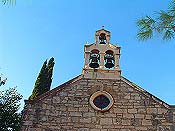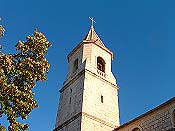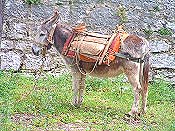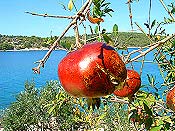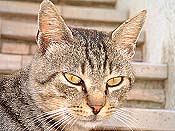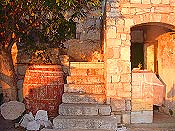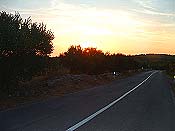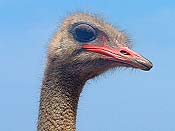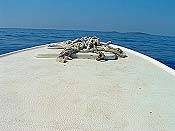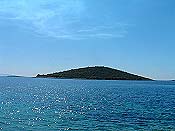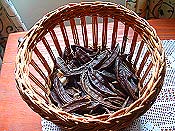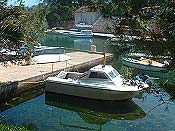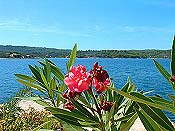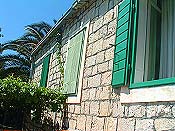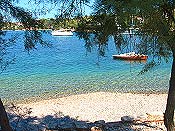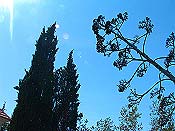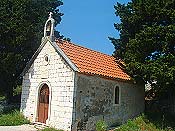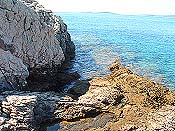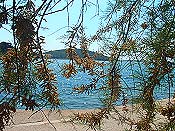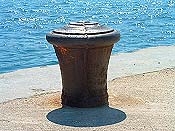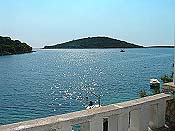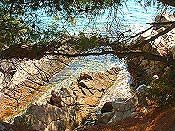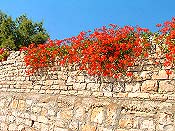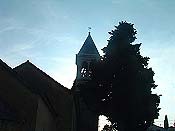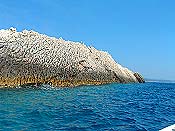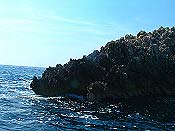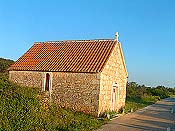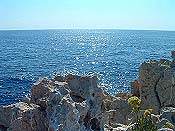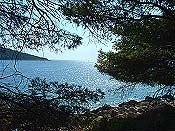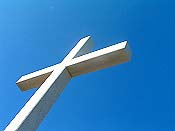Island Solta - Tourist guide
ISLAND SOLTA - Croatia, Dalmatia: Choose the destination for holidays and make reservations on-line. Check our offer of cities, towns, coves and islands through thousands of our photos!
Solta is an island in the central Dalmatian archipelago, west of the island of Brac; separated from the mainland by the Split Channel, from the Drvenik islands by the Solta Channel, and from the island of Brac by the Strait of Split. Solta is an island of a medium size, but with its 60 km of a very indented coast it is one of the most beautiful croatian islands mostly for these specific particolarities. This island presenting a very rocky coast actually has numerous beautiful bays in the Mediterranean varied vegetation.
More important places on the island of Solta are ports Maslinica, a fishing village, Rogac, a main port, Necujam, a tourist village, Stomorska, a fishing village and villages: Donje Selo, Gornje Selo i Srednje Selo.The main village and the center of the island is Grohote. Solta is connected with Split by daily ferry lines. Its 24 bays and 4 ports can take more than thousand small yachts, and its natural beaches several thousands of swimmers.
Although just half an hour by ship from Split, Solta's natural environment, its complete peace and silence, have remained untouched. Its preciousness is its intact nature with its magnific bays. Solta offers to its visitors the posibility to savour and to live again the Mediterrain of the remotest periods in the past, the cradle of the civilisation.
The emperor Diocletian and the queen Teuta knew that while Marko Marulic and Petar Hektorovic found poetic inspiration on the island of Solta. The island was civilised already in the illiric times and in the roman period becomes a stationary. There are more than 200 storical findings on the island such as prestorical heaps, sarcofaghi and Roman mosaics, buidings of the first Cristianity or rural towers. In Grohote and close to Donje selo, the remains of the paleocristian basilic were found. The St. Michael’s church between Grohote and Gornje selo keeps the Gotic frescs from the XIV century.
Olinta is an ancient name of this island, a name that still simbolizes ungrown fig. Under the pressure of the centuries, the name evolved to today’s name Solta. The marks of Greek and Roman presence on the island are visible throught the whole island. Restless and spiteful outlines of the island, its beauty and healing healthy climate promise a complete peace and pleasant moments in harmony with nature.
The initial settlements were situated along the island’s inlands, only recently they got closer to the coasts and beautifull bays on the island’s North and West side. Southern bays look towards the open sea, the island of Hvar and Pakleni islands, island of Vis and Svetac, even beyond the horizont. The highest peak is 237 m high and it is called Vela Straza. The path that takes You to the top of the hill is easy, in shadows of the pines.
Solta and Brac once were one island. In an azure shell of the sea and the sky by a miracle of tectonic natural forces, from the silent blue Adriatic Sea the island of Solta in its magnificent beauty was born. As a stone of fights, there stands Mrduja, about which, says the legend, fought Brac and Solta people. Brac’s peak Zaglav and Solta’s Livka turn itself towards one another, giving as a present to Split, a channel.
Fertile soil is found in the heart of the island’s highlands, and it carries an excellent road that rushes through the olive tree, wine grapes, pine woods and other mediterranean plant gardens, starting from Stomorska all to the Maslinica in the West, in length of about 20 km. It only stops to reach with its roots, those rarely inhabited bays and villages of the peasants. All of ten island’s settlements are very easily accessable by car, so the whole island is taken as one framed unity.
Donkey is one of the most reliable ways of transportation of the island people. People say it is the most stubborn and the laziest animal on the island but on difficult Solta’s paths it is of a great help. Did you know that old Romans used donkeys as help in building roads? They would let it in front of them knowing that it is so lazy that it would surely find the shortest and the easiest way.
Throughout its rich history Solta was being conquered, defended, attacked by pirates and discovered by artists. Whether a conqueror, villager or an artist – each of them left a trace of his age. From prehistoric period, antiquity and old Christian period to after-war period – each of these periods left a trace in Solta’s stone in order to tell us a story of the past times.
